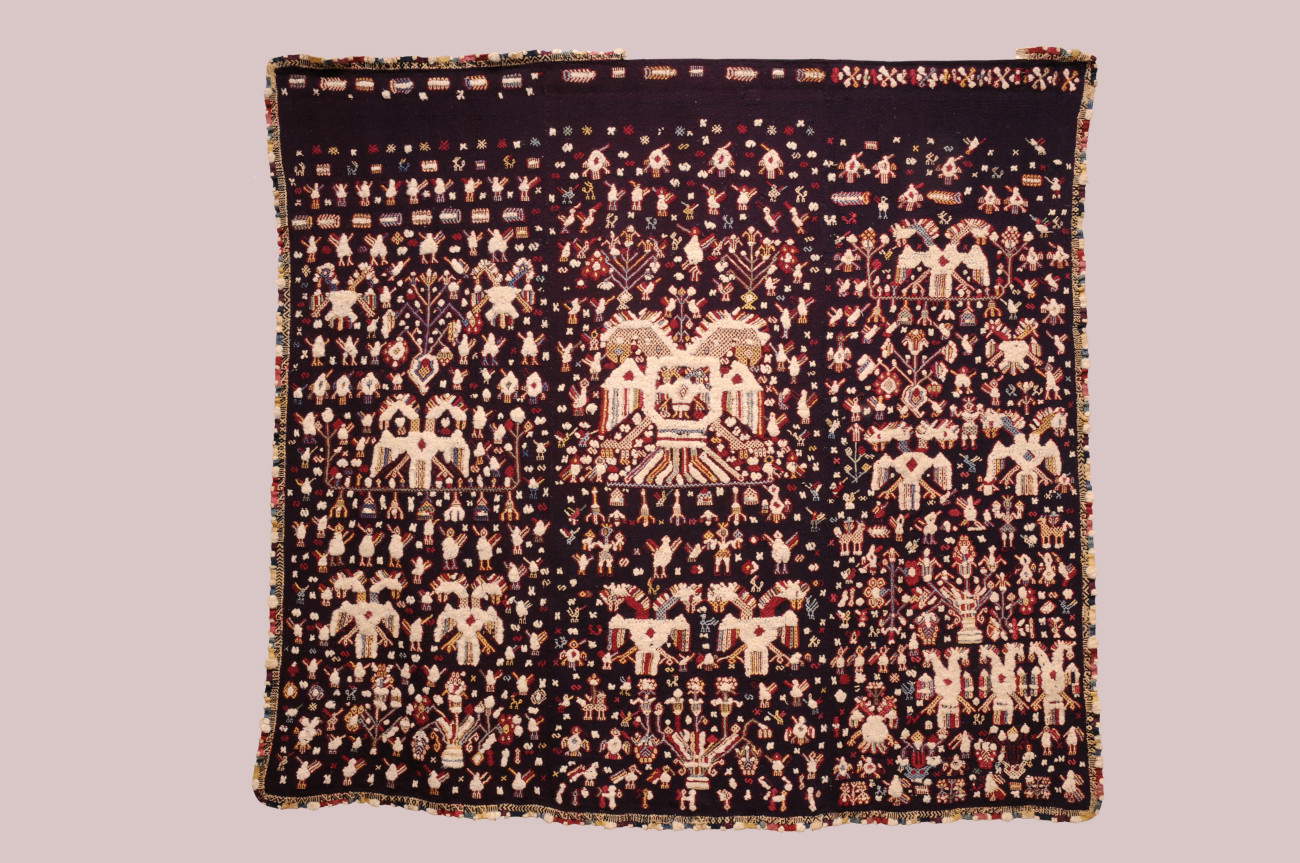From Aug. 1, 2024 to Feb. 16, 2025, at the Palace of Popular Arts and Traditions, the Museum of Civilizations in Rome presents TEXTILE IS HUMAN. Isabella Ducrot... and the Textile Collections of the Museum of Civilizations. The exhibition chronicles the languages and cultures of weaving through a selection of textile works from the museum’s historical collections and the works of Isabella Ducrot (Naples, 1931). The artist was invited by the Museum of Civilizations to explore the heritage of clothing, accessories, ceremonial or everyday fabrics kept in the showcases and storage rooms. From prehistoric archaeology to Italian folk arts and traditions and the thought systems, symbologies, narratives and rituals of cultures around the world, the textile collections are among the most fascinating yet fragile in the Museum of Civilizations. The exhibition is contextualized by a wide selection, curated by Francesca Manuela Anzelmo, Paolo Boccuccia, Gaia Delpino, Maria Luisa Giorgi, Laura Giuliano, Vito Lattanzi, Gabriella Manna, Loretta Paderni and Massimiliano Alessandro Polichetti, of garments and artifacts, which testify to how a textile is a rigorous physical structure that manifests itself as a true form of language, to which human beings have entrusted the narrative of their cultures. The artifact section of the exhibition, therefore, takes the form of a possible diary of a journey through space and time and a self-analysis of the museum’s history, woven into the structure, between wefts and warps, of its textile collections.
The exhibition itinerary features some fragmentary textiles from the Prehistoric Collections dating back to the Bronze Age; textiles made in Ethiopia and Congo in the late 19th and early 20th centuries from the African Arts and Cultures Collections; textiles from the American Arts and Cultures Collections, from the pre-Columbian era to the 20th century; and examples of Polynesian tapa, a special type of fabric made from strips of tree bark, from the Oceanian Arts and Cultures Collections. Particularly represented in the exhibition are textiles from the Asian Arts and Cultures Collections, from Himalayan artifacts to a sumptuous Chinese silk satin fabric with dragon decoration datable to the Qing Dynasty (1644-1911), and, finally, work and festive clothes and garments of daily use from the Collections of Folk Arts and Traditions, mostly made between the late 19th and 20th centuries and first shown in the International Exhibition held in Rome in 1911.
For Isabella Ducrot, fabric interweaves personal histories and cultures. Like the explorers and female explorers who created the textile collections of the Museum of Civilizations, Ducrot was also on the road for many years, creating a collection that she folded neatly into the drawers of a closet and a multiplicity of works in which the fabric is the matrix of the work itself. The curators of this section of the exhibition, Anna Mattirolo and Andrea Viliani with Vittoria Pavesi, have made possible for the first time the sharing between the historical textile collections of a public museum and the artist’s research, understanding it as a celebration of a textile knowledge that is at once abstract and concrete, intimate and shared. What fascinates the artist in a textile is not its decoration but the compositional relationship between history and structure, its being a “complex artifact whose invention goes back to mythical epochs of human history,” its being a document that declares “tastes, aesthetic rules, emigrations of signs, visible and tactile evidence of a culture.” A textile for her is, therefore, something intangible but in its own radical way: “almost nothing, difficult to describe for lack of adjectives, no colors, no decorations, no embroidery, only affirmation of one’s essence, simplicity reduced to the smallest terms and yet grand and moving, like a patriotic hymn.” Textile matter and weaving became the focus of passionate dedication over time, with interpretations and insights revealing what lies beyond the mere material datum. Gathering African, American, Asian, European and Oceanian works from the textile collections of the Museum of Civilizations as well as juxtaposing works by other authors and authors with their own, this exhibition and the artist invite a journey through time and space.
For info: https://www.museodellecivilta.it/
 |
| Rome dedicates an exhibition to Isabella Ducrot and weaving in the world |
Warning: the translation into English of the original Italian article was created using automatic tools. We undertake to review all articles, but we do not guarantee the total absence of inaccuracies in the translation due to the program. You can find the original by clicking on the ITA button. If you find any mistake,please contact us.